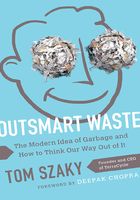
Planned Obsolescence
The concept of planned obsolescence originally emerged as an attempt to turn the economy around during the Great Depression. In 1932 Bernard London published a book called Ending the Depression through Planned Obsolescence in which he suggested that governments should impose legal lifespans on products, after which consumers would be required to return the object to be destroyed. This would spur more consumerism and help put everyone back to work.
This would spur more consumerism and help put everyone back to work.
Brooks Stevens, an American industrial designer, helped popularize the idea of planned obsolescence in the 1950s. He defined the concept as “instilling in the buyer the desire to own something a little newer, a little better, a little sooner than is necessary.” In his mind it wasn’t as much about making objects that break or requiring an object’s destruction after a certain period of time but rather making the consumer always desire something new.
In his mind it wasn’t as much about making objects that break or requiring an object’s destruction after a certain period of time but rather making the consumer always desire something new.
planned obsolescence A policy of planning or designing a product with a limited useful life so that it will become obsolete, that is, unfashionable or no longer functional, after a certain period of time.
Although planned obsolescence never became law, it was widely adopted by business in principle and is still in action today. There are two categories of planned obsolescence: obsolescence of desirability and obsolescence of function. In lay terms, manufacturers can render an object waste before it breaks through either fashion or planned breakability.
Fashion Would you wear clothing with shoulder pads? Sport a fanny pack or tracksuit? Put a scrunchie in your hair? If the styles of the 1980s were still in fashion, you might, and all of those items would be flying off the shelves. Fashion is all in our heads. When Vogue and ELLE magazines say that flat shoes are in style, the heels hit the trash. When someone decides that heels are back in, the flats are out. Though it seems unnecessarily wasteful when scrutinized, fashion is good for business; it renders an object as waste well before it breaks and in turn drives incremental consumption.
Planned breakability Perhaps the most famous case of planned breakability is that of the light bulb. Today, more than 150 years after the light bulb was invented, an average modern incandescent bulb lasts 750 hours. So why is there an incandescent light bulb in Livermore, California, that has been burning nonstop for 110 years?
So why is there an incandescent light bulb in Livermore, California, that has been burning nonstop for 110 years?
It’s because in 1924 in Geneva, all the light bulb manufacturers got together and created a cartel, at the time called Phoebus, to cut the life of a light bulb. By making the filaments more fragile than they needed to be, light bulbs would burn out quicker, and the cartel could sell more. It was so serious that manufacturers were fined if their light bulbs lasted more than 1,500 hours. Before 1924 the average bulb lasted about 2,500 hours. Within a decade it was at 1,500 hours and has since declined to today’s 750.
It was so serious that manufacturers were fined if their light bulbs lasted more than 1,500 hours. Before 1924 the average bulb lasted about 2,500 hours. Within a decade it was at 1,500 hours and has since declined to today’s 750.
The same thing happened when nylon came to be. The first nylon prototypes from DuPont were so strong they could tow a car. But durable stockings don’t make for frequent purchases, so scientists created a more fragile material.
Today things aren’t much different. Besides light bulbs and nylons, many inkjet printers contain a counter chip that will effectively shut off the printer once it has printed approximately 20,000 pages—even if nothing is wrong with it. And have you ever tried changing the battery on an iPod, iPhone, or iPad? In 2004 and 2005, class action lawsuits were brought against Apple regarding diminishing battery life. Before then company policy was to instruct users of iPods with defunct batteries to buy the new model. As discovered during the lawsuit, Apple consciously designed the battery to fail after a year or two.
Before then company policy was to instruct users of iPods with defunct batteries to buy the new model. As discovered during the lawsuit, Apple consciously designed the battery to fail after a year or two.
Planned obsolescence is perhaps the biggest injustice to consumers committed by the manufacturing industry. It is one thing for a consumer to be manipulated by changing fashion, but it is quite another to sell objects that are designed to break.